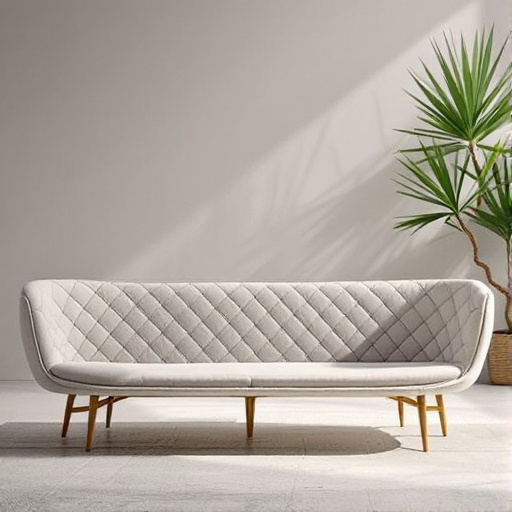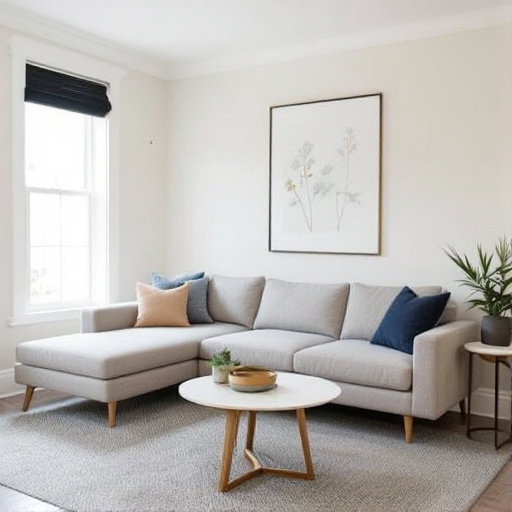Featured Articles
- 8 Essential Psychological Triggers to Consider When Choosing Furniture for Lasting Comfort and Style
- Embracing Minimalism: The Rise of Multi-Functional Furniture in Small Space Living
- "Exploring the Minimalist Movement: Furniture Choices That Speak Volumes Without Saying a Word"
- "Feng Shui Furniture: Can the Right Pieces Transform Your Energy Flow at Home?"
- "Furniture Feng Shui: Unveiling the Hidden Energy of Your Home Design Choices"
8 Essential Psychological Triggers to Consider When Choosing Furniture for Lasting Comfort and Style
8 Essential Psychological Triggers to Consider When Choosing Furniture for Lasting Comfort and Style
8 Essential Psychological Triggers to Consider When Choosing Furniture for Lasting Comfort and Style
1. Color Psychology: Setting the Mood
Color is one of the most influential psychological triggers in interior design. The hues you choose for your furniture can significantly affect your mood and the ambiance of the space. Warm colors like reds and oranges tend to energize and inspire conversation, making them great for social areas, while cool blues and greens encourage relaxation and tranquility, ideal for bedrooms or reading nooks.
Understanding color psychology allows you to create a space that not only looks appealing but also feels just right for its intended use. For example, pastel shades can evoke calmness and softness, while bold primary colors can add a sense of vibrancy and confidence.
Studies, such as those published in the Journal of Environmental Psychology, confirm that color impacts emotional response, stress levels, and even productivity. So when selecting furniture upholstery or finishes, consider the psychological effect of color on your well-being and style preferences.
2. Texture and Tactile Comfort
Beyond visual appeal, the texture of your furniture plays a crucial role in the sensation of comfort. Soft, plush fabrics like velvet and chenille can evoke feelings of warmth and coziness, while smoother textures such as leather bring a sense of sophistication and cleanliness.
Psychologically, tactile experiences influence how we perceive comfort and luxury. A piece that invites touch encourages relaxation and connection with the environment, which is essential for lasting comfort.
When choosing furniture materials, consider how textures interact with your lifestyle and sensory preferences. Mixing textures can create a dynamic and layered look that is both visually intriguing and soothing to the touch.
3. Shape and Form: The Power of Curves
Furniture shape affects psychological responses more than many realize. Rounded edges and curved forms tend to be associated with safety, softness, and approachability, while straight lines and sharp angles convey structure, modernity, and sometimes rigidity.
Designers often use curves to foster a welcoming atmosphere, especially in living rooms where comfort and social interaction are priorities. On the other hand, sharp angles can stimulate alertness and focus, making them suitable for workspaces.
Incorporating organic shapes in your furniture selection helps to balance aesthetic appeal with psychological comfort. The shape you choose should echo the emotional tone you want your space to embody.
4. Size and Proportion: Creating a Sense of Balance
Furniture that fits well within a room’s proportions contributes to a harmonious environment, reducing feelings of stress or discomfort caused by clutter or imbalance. Oversized furniture in a small room can overwhelm and cause unease, while pieces that are too small may feel inadequate or insubstantial.
Psychologically, balanced proportions create a sense of order and stability, which is foundational for relaxation and style longevity. Consider the scale of your furniture not only in relation to the room but also how you use the space.
Careful measurement and thoughtful arrangement based on human scale can maximize both comfort and aesthetic appeal, making the environment more inviting and functional.
5. Functionality and Psychological Ease
Furniture should serve your lifestyle efficiently, and this functional fit reduces mental clutter and enhances comfort. Multipurpose pieces or ergonomic designs meet users' needs while minimizing frustration or strain.
Psychologically, when furniture simplifies daily activities or fosters ease of use, it promotes a sense of control and well-being. For instance, adjustable chairs or sofas with recline features support ergonomic comfort, which affects mood and physical health positively.
Prioritize form that follows function so your furniture supports your habits and routines, creating a seamless blend of style and comfort.
6. Familiarity and Emotional Connection
Humans naturally gravitate toward objects that evoke memories or emotional resonance. Furniture that reminds you of positive experiences or conveys a sense of nostalgia can create deeper psychological comfort.
Incorporating heirloom pieces or vintage styles that align with your personal history fosters a meaningful sense of belonging and continuity in your space. This emotional connection also enhances the perceived coziness and warmth of the furniture.
Choose furniture that not only fits your aesthetic taste but also resonates on an emotional level to achieve a style that feels truly lasting and comfortable.
7. Lighting Interaction: Enhancing Appearance and Mood
Furniture interacts with lighting to influence both style perception and psychological comfort. Materials and colors reflect, absorb, or diffuse light differently, altering the ambiance.
Bright furniture in well-lit spaces can invigorate and uplift moods, while darker pieces benefit from softer lighting to create a cozy atmosphere. Additionally, glossy finishes can bounce light, adding a dynamic element to your design.
Planning furniture placement with lighting in mind enables you to optimize both aesthetics and emotional effects, contributing to an inviting, comfortable space.
8. Personal Identity and Expression
Ultimately, your furniture choices reflect who you are, influencing your psychological comfort through self-expression. Surrounding yourself with pieces that align with your tastes and values fosters authenticity and emotional satisfaction.
According to psychological theories like Maslow’s hierarchy, self-expression fulfills higher-level emotional needs. Selecting furniture that communicates your story and style enhances comfort beyond physical dimensions.
Incorporate elements that resonate with your interests, culture, or aspirations to create a living space that truly feels like home and supports lasting style comfort.




